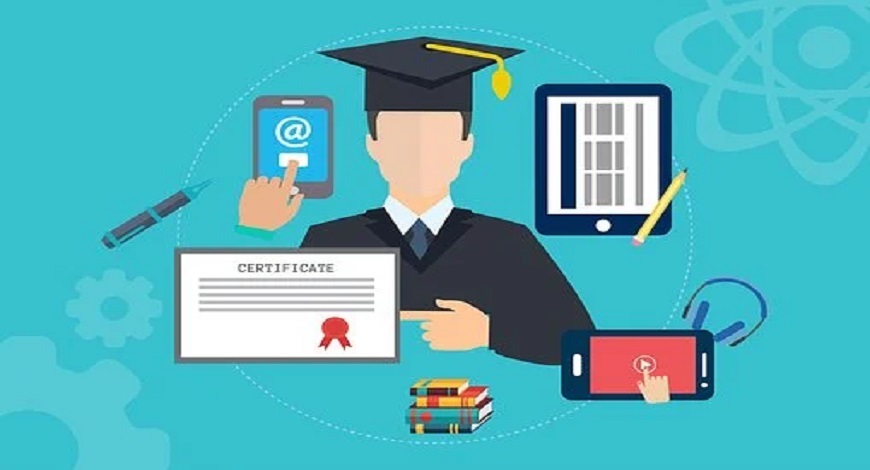Teacher training programs can provide educators with the knowledge and skills they need to create and deliver instruction that meets the needs of learners who come from different backgrounds, cultures, and learning styles, improving the learning standard at these higher education institutions
A country’s economic performance is inextricably linked to the efficacy of its education system. The quality of education is a critical determinant of an economically advanced nation, and this statement holds true for India as well. In terms of the student population, India has the world’s third-largest higher education system, trailing only China and the United States. In the future, India will be one of the most coveted educational hubs. Since independence, India’s higher education sector has seen tremendous growth in the number of Universities/University level Institutions & Colleges. The ‘Right to Education Act,’ which mandates compulsory and free education for all children aged 6 to 14, has revolutionised the country’s education system, with statistics revealing a staggering increase in school enrolment over the last four years creating a dire need for quality higher education institutions in India.
Higher education in India has a vision of fully realising the country’s human resource potential through equity and inclusion. In recent decades, the higher education sector has seen tremendous growth in many areas, including institutional capacity, enrolment, teacher-student ratio, and so on. At the same time, the rapid expansion of the higher education system has raised several pertinent issues concerning equity, efficiency, excellence, and access to higher education in the country.
The country’s National Education Policy 2020 includes ambitious targets. According to the policy, all ‘higher education institutions (HEIs) must strive to be multidisciplinary by 2040. By 2030, every district should have at least one multidisciplinary HEI. The policy aims to increase the gross enrolment ratio (GER) in higher education to 50 per cent by 2035, up from 26.3 per cent in 2018.
Teacher training is an indispensable component of quality education and has a significant impact on a country’s overall development. It is critical to improving the quality of education delivered to students. Skilled teachers can assist students in not only their academic development but also their emotional, and social development. They can effectively motivate the students to realize their full potential and accomplish their life goals. Today’s classrooms have evolved, and advanced technologies have impacted how students learn and teachers teach. Our learning environment is continually changing as customization, collaboration, self-learning, multi-format methods, and gamification, among other things, take centre stage. This multiplies the necessity for teacher training even further.
The private sector’s involvement in higher education has resulted in significant changes in the field. This sector now promotes more than 60 per cent of higher education institutions in India, which has resulted in India having the most Higher Education institutions in the world, with the second-highest student enrolment. From 20 in 1950 to 677 in 2014, the number of universities has increased 34 times. Despite these figures, many of these institutions have not been ranked among the best in the world by international education rating agencies.
Teacher training programs can provide educators with the knowledge and skills they need to create and deliver instruction that meets the needs of learners who come from different backgrounds, cultures, and learning styles, improving the learning standard at these higher education institutions. This can help foster an inclusive and equitable learning environment that advances not just academics but overall success. Through teacher training, educators can learn how to create a conducive learning atmosphere, use technology to increase student engagement, and encourage critical thinking and problem-solving skills. Teacher training programs can assist educators in developing and delivering education that is aligned with their institution’s academic goals, hence increasing student success rates. According to the AISHE 2020-21 study, the overall number of students enrolled in higher education climbed from 3.85 crores in 2019–20 to about 4.13 crores in 2020–21. Teachers must be trained to deliver relevant and captivating information to students in order to convert this enrolment to attendance.
Furthermore, teacher training programs assist teachers to build their professional identity and feel more confident in their work. Programs for teachers offer a chance for educators to develop their teaching abilities, including instructional design, lesson planning, and delivery strategies. These abilities are crucial for creating an engaging learning environment for students, which contributes to their achievement of academic and professional objectives. Due to the constantly evolving nature of the educational landscape, it is critical for educators to stay updated on current trends and instructional approaches. Teacher training programs give educators a platform to learn cutting-edge teaching methods, new technologies, and evolving pedagogical practices.
In this year’s budget, the finance minister emphasized the importance of excellent teacher training and the development of resilient mechanisms in education delivery. To that end, the government will reimagine teacher education through innovative pedagogy, curriculum exchange, continual professional development, dipstick surveys, and ICT implementation. Furthermore, District Institutes of Education and Training will be transformed into thriving centres of excellence.
Teachers are at the forefront of developing tomorrow’s critical thinkers and change-makers in today’s schools. Teachers make a significant contribution to the development of a workforce that is prepared for the future and will advance the country through its creative and productive output. Only by strategically investing in programs to improve the diverse pool of instructors and digital infrastructure, can we establish the groundwork for India’s young to be a knowledge powerhouse and construct learning solutions that scale and modernize education for the twenty-first century.

